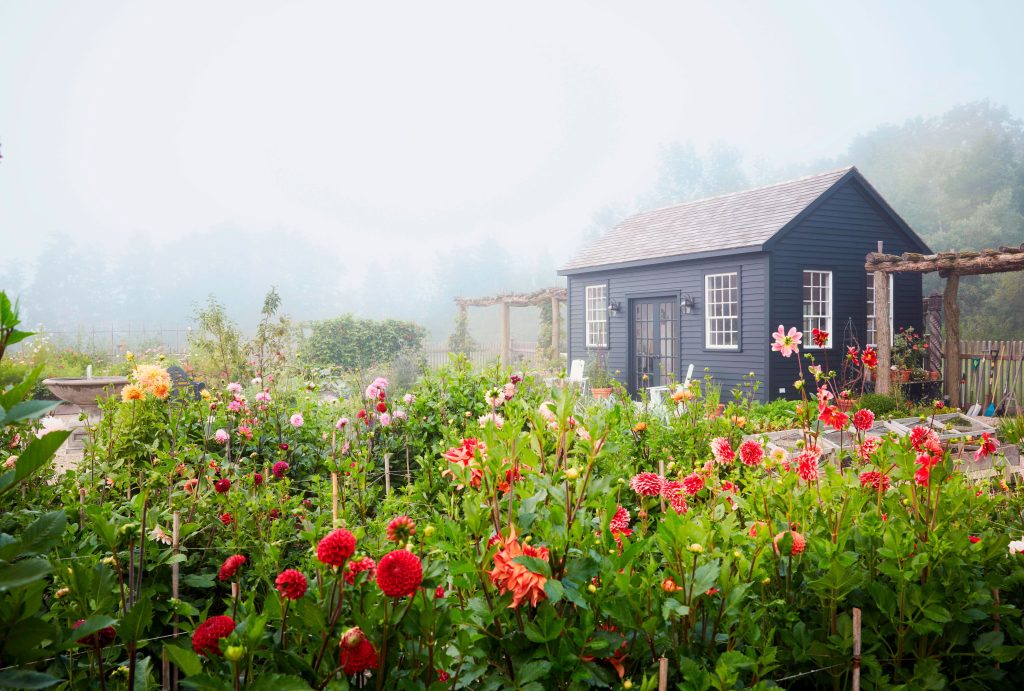:max_bytes(150000):strip_icc():format(jpeg)/BHG-KenmoreHall-8dltAsrhqy28HMjsW3Me-S-8f1f30b4efca41bc8a105cea78fb5323.jpg)
Key Takeaways
- The garden at the Inn at Kenmore Hall was created by fashion designer Frank Muytjens and painter Scott Edward Cole.
- The raised bed garden is a productive culinary and flower garden, as well as a visual feast.
- A balance of colors, textures, and shapes give the garden a visual rhythm.
Walking into the garden of the historic Inn at Kenmore Hall in Richmond, Massachusetts, is like stepping into a landscape painting. The 5,100-square-foot garden composed of 24 raised beds has a pleasing visual rhythm, beautifully balancing colors and textures even as the vegetables, herbs, and flowers tangle with one another.
It’s the vision of the inn’s aesthetic-minded owners and avid gardeners, painter Scott Edward Cole and fashion designer Frank Muytjens, who were inspired by the “order and chaos” of English gardens. Here’s how they created their space—and lessons anyone can use to bring beauty to raised beds.
Ngoc Minh Ngo
1. Create a Color Story
Garden planning starts in the depths of winter. “We take about three days to come up with the color story for the coming season before we plant, and then there’s a whole system of plotting everything out on graph paper,” Muytjens says. The flower palette is often cool with pops of hot colors—“for visual tension,” Cole says. From there, the gardeners start much of their garden from seed with grow lights in their basement.
Ngoc Minh Ngo
2. Have an Underlying Order
The raised beds are arranged around a central fountain. “We wanted basic symmetry, but it’s not a perfect mirror,” Cole says. A slightly different mix of L-shape and rectangular beds on each side “creates more interest as you’re walking through—you’re not just seeing straight corridors.” Conical boxwood provides year-round structure in each quadrant.
Ngoc Minh Ngo
3. Incorporate Pieces with Patina
In the middle of the garden, a small antique French bistro set with chipped yellow paint lends a sense of character and provides a spot for enjoying a drink.
Ngoc Minh Ngo
4. Add Contrast
To contrast with the flower-filled landscape, they painted their garden cottage darkgreen (Benjamin Moore Black Forest Green). Against the cottage, a vintage table serves as both potting station and decorative moment, with terra-cotta pots standing out against the wall.
Ngoc Minh Ngo
5. Soften Edges
A border of oak leaf hydrangea, azalea, black lace elderberry, and other perennials chosen to bloom in sequence softens the line between the garden and more natural landscape beyond.
Ngoc Minh Ngo
6. Focus on Favorite Flowers
The couple grow a variety of flowers—zinnias, celosia, and more—but dahlias are Muytjens personal passion. In addition to tubers he’s overwintered, he adds a few new varieties each year—which often means setting his alarm to catch the new releases from his favorite online shops, Stonehouse Dahlias and River Merle Farm. “There’s such a huge demand for certain dahlias, you have to click the second you see the one you want,” he says.
Ngoc Minh Ngo
7. Choose Rustic Materials
Wood structures and twiggy supports throughout the garden give it a timeless charm. The beds were all constructed of local black locust, prized for its durability. “People in the Berkshires joke it lasts 100 years longer than stone,” Cole says.
Ngoc Minh Ngo
8. Allow for Wildness
The gardeners combine plants based not just on what will grow well together from a practical perspective, but what will bring contrasting shapes and textures. They love the garden’s untamed quality as it grows in, with sage spilling over, love-in-a-mist popping up in the middle of pathways, and fennel fronds and globe amaranth tangling with one another. And when, say, the broccoli is left to go to flower, it’s with intention. “Sometimes,” Muytjens says, “we forsake the culinary purpose of a plant for its beauty as it is.”

